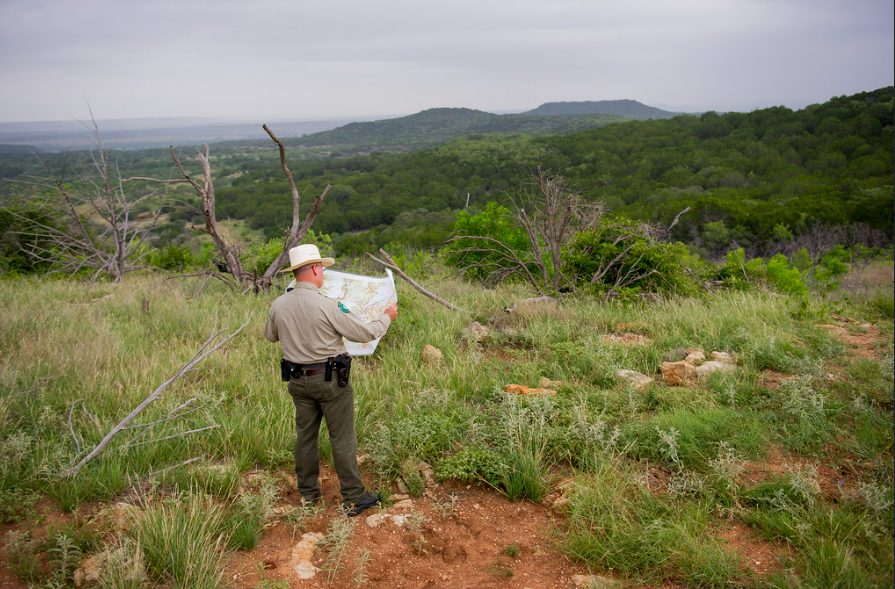Discover Texas’ Newest State Park
This year, Texas will celebrate 100 years of protecting and preserving historic, naturally significant, and beautiful lands in Texas state parks. Just in time to commemorate this milestone, Texas’ newest state park, Palo Pinto Mountains State Park, is set to open just 75 miles west of the Dallas-Fort Worth Metroplex. Surrounded by live oak, mesquite, cedar elms, and native pecan trees, the 4,871-acre nature area will boast the title of North Texas’ first new state park in nearly 25 years.

“This park, and this whole part of Texas really, is rich in natural and cultural resources,” said James Adams, superintendent of Palo Pinto Mountains State Park. “Being from this area, I’m especially excited about this park [and] the opportunity to share it with others.”
Adams said the public can expect a soft opening in late 2023 with full openings in 2024. However, an exact date has yet to be announced.

“As with any construction project, there are a number of things that could cause delays,” he said. “Weather and availability of materials are not least amongst them.”
While Texas state parks have seen a substantial increase in visitors during the coronavirus pandemic, the date of the opening of this park is unrelated, said Adams.
“We have been experiencing an increase in demand for our parks since well before 2020,” he said. “We are diligently trying to provide more opportunities for Texans to recreate [in the] outdoors. The pandemic just put a bigger spotlight on that need.”
Adams believes each park in the Lone Star State is special in its own right and that this newest one, located just off interstate 20 near the city of Strawn, will have something for just about everyone.

“The lake [Tucker Lake] is great for paddlers and anglers,” he said. “The topography and elevation change makes for great trails for hikers, bikers, and equestrian users. Additionally, this area has a rich and fascinating history that many will find captivating.”
The park has an interesting historic and prehistoric past. Some artifacts that have been found on the land are estimated to be nearly 8,000- to 9,000-years-old. The area lies at the conjunction of two major Pre-Columbian cultural zones, the Southwest and the Plains. Not to mention there is an old ghost town on the property that was once built around a booming railroad business.
The park will also feature a network of multi-use trails that will be open to hikers, bikers, and even horseback riders, as well as two creeks and several 1,400-foot peaks spread across the land. On the 90-acre Tucker Lake, visitors can enjoy fishing, boating, and swimming. (However, motorboats will not be allowed on the lake to preserve the park’s serenity.) Overnight guests can enjoy RV and tent camping areas. Locals wanting to simply stay for the day can take advantage of picnic areas and playgrounds.

In terms of wildlife, there are a variety of species to be found at Palo Pinto Mountains State Park.
“Visitors can expect to encounter any number of species native to the Cross Timber Region of Texas,” said Adams. “Some common examples include white-tail deer, coyotes, nine-banded armadillos, and squirrels.”
There are also several less-common species in the area including ring-tail cats, porcupines, golden-cheeked warblers, and black-capped vireos.
Of course, all this beauty comes with a price tag. According to Adams, the funding structure for Palo Pinto Mountains State Park is unique. The overall estimated construction budget was about $30 million. Of that, he said $12.5 million was appropriated by the legislature, another $10 million came from dedicated TXDOT funding, and the remaining $9 million is being raised by the Texas Parks and Wildlife Foundation via private donations.
The Texas Parks and Wildlife Department purchased the first 3,300 acres of the park in 2011. Adams said that the plans for Palo Pinto Mountains State Park have gone through several evolutions of design, but the idea is to have the developed areas cover only about 200 acres. The goal is to construct buildings that will blend in with the surrounding landscape.
“Some versions added facilities, others removed some,” he said. “Ultimately, we decided to construct the version that we felt offered the most to our visitors and was within our price range. At the same time, the facilities that are being constructed are laid out in such a way as to facilitate future expansion.”


 Sign in
Sign in

